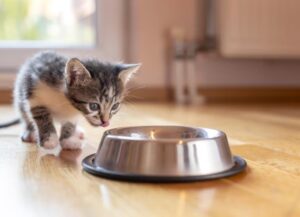Veterinary Blood Glucose Meter vs. Human Models: What’s the Difference?

When managing diabetes in pets, it’s essential to understand the distinctions between veterinary and human blood glucose meters. Veterinary glucose meters are specifically calibrated to account for the unique blood composition of animals, providing more accurate readings. Human meters may yield errors due to variations in hematocrit and glucose metabolism between species. While veterinary devices might cost more initially, their precision justifies the investment. Exploring further will uncover detailed comparisons and guidance for ideal diabetes management in animals.
Understanding Blood Glucose Monitoring
When it comes to blood glucose monitoring, understanding the principles behind this essential process is crucial for effective diabetes management, whether in humans or animals. Monitoring technology has advanced considerably, offering precise insights into glucose levels. You rely on such technology to achieve ideal diabetes control, a task where device accuracy plays a pivotal role. Innovative glucose meters provide real-time data, allowing for timely interventions and adjustments. It’s essential to select devices tailored to specific needs, with a focus on precision and reliability. Both veterinary and human models have evolved, yet each caters to unique physiological demands. By leveraging cutting-edge technology, you’re equipped to make informed decisions, enhancing diabetes management and improving outcomes. Embrace these advancements for a healthier future.
Species-Specific Blood Composition
When comparing veterinary and human blood glucose meters, it is essential to consider the species-specific blood composition. Differences and variations in glucose metabolism, as well as variations in hematocrit levels, considerably affect glucose readings. It’s vital to understand these factors to guarantee accurate blood glucose monitoring across different species.
Glucose Metabolism Differences
Although glucose metabolism is a fundamental process across species, distinct differences in blood composition necessitate specific considerations when comparing veterinary and human glucose meters. You’ll find that glucose absorption differences considerably impact how glucose levels are measured. Animals and humans exhibit unique physiological traits that influence the rate at which glucose enters the bloodstream. These glucose absorption differences can complicate direct comparison between species. Additionally, insulin response variability adds another layer of complexity. Animals often exhibit varying insulin sensitivity and secretion rates, which can impact blood glucose regulation. This variability means that glucose meters must be calibrated specifically for each species to guarantee accurate readings. Understanding these metabolic nuances is vital for developing innovative technologies that cater to the precise needs of both human and veterinary applications.
Hematocrit Levels Variation
Understanding the differences in glucose metabolism sets the stage for examining how hematocrit levels vary across species. The impact of hematocrit on glucose meter accuracy is critical, as species-specific blood composition can lead to measurement variability. For instance, a high hematocrit level, standard in certain animals, can lead to inaccurate glucose readings on meters designed for humans.
Consider the following factors that influence these variations:
- Species Differences: Animals, such as cats and dogs, have distinct hematocrit levels compared to humans, which can affect the precision of glucose measurements.
- Device Calibration: Human glucose meters are typically calibrated for the standard human hematocrit range, which may lead to errors when used in veterinary contexts.
- Technological Innovation: Veterinary-specific glucose meters are designed to account for these variations, ensuring more accurate diagnostics across species.
Understanding these factors helps in choosing the right tool for accurate glucose monitoring.
Calibration Differences in Meters
When considering calibration differences, it is essential to account for species-specific calibration needs resulting from variations in blood sample composition. Veterinary blood glucose meters are designed to handle the unique characteristics of animal blood, which differ considerably from human blood in terms of cell size and distribution. This guarantees accurate readings tailored to the physiological differences across species.
Species-Specific Calibration Needs
In veterinary medicine, the calibration of blood glucose meters is critical due to the physiological differences between species. You must consider species calibration to guarantee accurate readings. Selecting the right device is essential for precision. Veterinary meters are specifically calibrated to account for the unique metabolic rates and glucose distribution in animals. Here are three key considerations:
- Species-Specific Algorithms: Veterinary meters utilize algorithms tailored for different species, guaranteeing reliable results.
- Device Selection: Choose devices designed for veterinary use, as human meters may not accurately reflect animal glucose levels.
- Metabolic Variability: Animals exhibit varying glucose metabolism rates, necessitating specialized calibration to account for these differences.
Blood Sample Composition
As you explore the calibration differences between veterinary and human blood glucose meters, it’s vital to consider the composition of the blood samples. Different blood sample types, such as capillary, venous, or arterial, can affect glucose readings due to inherent variations in glucose levels. Veterinary meters are calibrated to account for these variations across different species. Animals often have different blood cell counts, plasma protein levels, and hematocrit values compared to humans, which can affect glucose readings. Human meters are specifically calibrated for human blood composition, which may lead to inaccuracies when used for animals. Understanding these differences ensures precise glucose monitoring, which is essential for effective diabetes management across species. Embracing innovative approaches in calibration can enhance meter accuracy, reflecting the true glucose levels in diverse blood samples.
Accuracy and Precision of Readings
Although the choice between veterinary and human blood glucose meters might seem trivial, the accuracy and precision of their readings greatly impact diagnosis and treatment. When evaluating meter performance, you’ll find that veterinary meters are calibrated specifically for animal blood composition, which can differ significantly from that of humans. This calibration is essential for accurately reflecting glucose variability in animals. In contrast, human meters may not provide the same precision in animal readings, leading to potential misdiagnoses.
Consider these factors:
- Species-Specific Calibration: Veterinary meters are specifically designed for animal blood, thereby enhancing accuracy.
- Glucose Variability: Animal glucose levels can fluctuate differently from those of humans, requiring meters that account for this variation.
- Diagnostic Precision: Precise readings guarantee better treatment outcomes, particularly for managing diabetes in pets.
Innovating in blood glucose monitoring means selecting the right tool for the species.
Cost Considerations and Budgeting
When choosing between veterinary-specific and human blood glucose meters, you’ll need to evaluate both the initial purchase price and the long-term maintenance costs. Veterinary models often have a higher upfront cost, but they can be more accurate for animal use, potentially reducing future expenses related to misdiagnosis. For budget-friendly alternatives, some human models may provide a cost-effective solution; however, you should weigh this against the potential need for additional testing or calibration.
Initial Purchase Price
Purchasing a blood glucose meter, whether for veterinary or human use, involves careful consideration of initial costs. To make an informed decision, consider initial investment options and conduct a thorough price comparison analysis. Here are three important aspects to evaluate:
- Device Features: Advanced features can greatly affect the cost. Veterinary models may include species-specific settings, while human models focus on ease of use.
- Device Accuracy: High precision is essential, especially in veterinary settings where diverse species are involved. This might increase the initial purchase price for veterinary meters.
- Brand Reputation: Established brands often come with a premium price. Evaluate if the reliability and support offered justify the added expense.
Long-term Maintenance Costs
While evaluating blood glucose meters, don’t overlook the long-term maintenance costs as they can accumulate considerably over time. Regular calibration, replacement of test strips, and battery changes are necessary expenses that impact your budget. Adopting effective maintenance strategies can lead to long-term savings. For instance, choosing a meter with longer-lasting test strips or rechargeable batteries can reduce recurring costs. Additionally, some veterinary-specific models might have higher initial prices but offer cost-efficient maintenance practices tailored for animal use. By analyzing the frequency of use and specific requirements of your practice, you can identify the most economical option. Prioritize innovation in your selection to guarantee the chosen model aligns with both clinical accuracy and cost-effectiveness over its lifespan.
Ease of Use and Accessibility
Selecting the right blood glucose meter for veterinary use involves evaluating its ease of use and accessibility. User-friendly features are essential, as they streamline the testing process, minimizing stress for both you and the animal. Look for meters with intuitive interfaces and straightforward navigation, guaranteeing that anyone in your practice can operate them efficiently. Accessibility options, such as large displays and audible signals, enhance usability, particularly in fast-paced veterinary environments. Consider devices designed with innovative technology that offer seamless integration with other veterinary tools. This integration guarantees that the workflow remains efficient and less prone to errors. By prioritizing ease of use and accessibility, you can guarantee a more accurate and stress-free experience when managing your patients’ glucose levels.
Making the Right Choice for Your Pet
How can you guarantee your pet’s blood glucose meter meets their specific needs? As a pet owner, choosing the right device involves considering pet owner preferences and device portability. Innovative technology enables you to monitor your pet’s glucose levels accurately. Veterinary-specific meters are calibrated for animal blood, offering more precise readings compared to human models. Consider the device’s portability—compact, lightweight meters are ideal for on-the-go tracking, ensuring you can manage your pet’s health anywhere. Look for features such as memory storage, ease of use, and quick results to meet your pet’s lifestyle and management goals. Prioritize devices with user-friendly interfaces and reliable technology to efficiently optimize care and adapt to your pet’s unique needs.
Conclusion
Choosing between a veterinary and a human blood glucose meter isn’t just about the numbers; it’s about precision in care. While human meters may seem cost-effective, they lack the species-specific calibration essential for accurate readings in pets. Misleading data can lead to inappropriate treatments and impact your pet’s health. Trust your veterinarian’s advice, weigh the costs against accuracy, and prioritize your pet’s unique needs. The right choice guarantees effective management of their condition.







